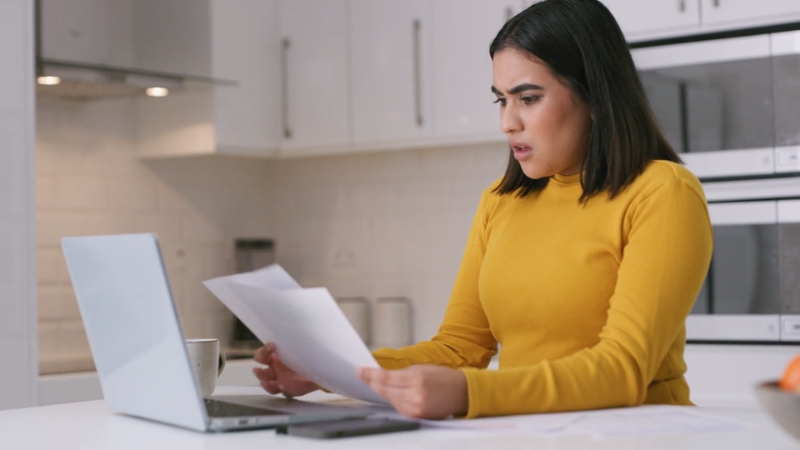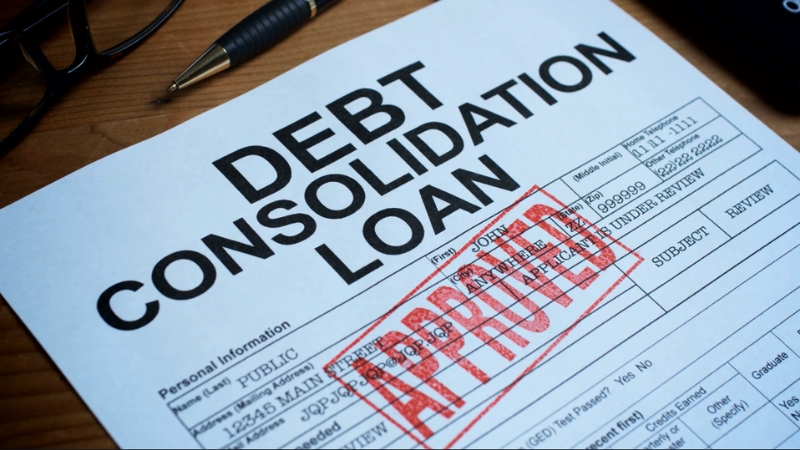Payday loan debt can feel impossible to escape, but there are proven, realistic ways to break the cycle.
The most effective approach is to stop the borrowing spiral, contact your lenders directly to ask for extended payment plans, and use a mix of debt consolidation, nonprofit credit counseling, and strict budgeting.
You do not need to face this alone or keep paying forever—people get out of payday loan debt every day by following practical steps and reaching out for support.
Payday loans are marketed as quick solutions for emergencies, but with typical interest rates ranging from 200% to 600% APR (and sometimes higher), they can quickly become unmanageable.
What often happens is a cycle: you borrow a small amount, can’t pay it back in full on your next paycheck, so you roll over the loan—paying a big fee each time—while the balance barely goes down.
If you have multiple payday loans or are stuck in this cycle, it’s not a reflection of your character. These loans are designed to keep you borrowing. Getting out is possible, and you’re not alone.
Step 1: Stop the Borrowing Spiral

Getting stuck in payday loan debt can feel like running on a hamster wheel—no matter how fast you move, you never get ahead.
Breaking the cycle starts with a simple but tough commitment: stop borrowing, even if it feels impossible at first.
Here’s how to do it in real life.
Why It Feels So Hard
Payday loans are designed to keep you in debt. You borrow to cover an emergency, but by the time your next paycheck comes, the loan plus sky-high fees eat it all up. So you borrow again, and the cycle repeats.
The Payday Loan Trap
Borrow Again?
What Happens
Result
Yes
Fees and interest grow, debt never shrinks
The cycle continues
No
You face collection calls, but the debt stops growing
The cycle can finally break
What to Do Instead
- Pause before you borrow again. Remind yourself that every new payday loan makes it harder to escape.
- Write down what you owe—listing every loan, amount, and lender. This is the first step to seeing the big picture and planning your next move.
- Tell yourself it’s okay to say no. You might miss a payment or get collection calls, but you’re choosing a new path.
What to Expect in the First Week
- You may feel anxious or guilty. That’s normal. Remember, you’re making a smart choice for your future.
- You might get calls from lenders. Stay calm and be honest—you’re working on a plan.
- Your paycheck will stretch a little further. You won’t lose as much to fees, and you can start covering essentials.
Tips to Make It Stick
Step 2: List Every Loan and What You Owe

Make a complete list of all your payday loans—including the lender name, total balance, interest rate, due date, and any recent payments.
It may feel overwhelming, but writing everything down is crucial for seeing the whole picture and making a plan.
Payday Loan Debt Overview Example
Lender Name
Total Balance
Interest Rate (APR)
Next Due Date
Last Payment
Status
FastCash Loans
$500
350%
07/05/2024
$100
Active
SpeedyPayday
$650
450%
07/10/2024
$80
Active
QuickAdvance
$300
500%
07/11/2024
$60
Active
Having all your debts in one place will help you make a repayment plan and spot which loans are costing you the most.
Step 3: Contact Your Lenders and Request an Extended Payment Plan (EPP)
Many states require payday lenders to offer an Extended Payment Plan (EPP) if you ask for one before your loan is due.
This option lets you pay back the loan over time, usually in equal installments, without additional rollover fees or interest. Contact your lenders directly—by phone, email, or even chat—and ask for an EPP.
Step 4: Consider Debt Consolidation

If you qualify, consolidating your payday loans into a single, lower-interest loan can make repayment more manageable.
Some banks, credit unions, or online lenders offer personal loans or payday loan alternatives.
You may need fair or better credit, but even with poor credit, some credit unions have special programs.
Payday Loan vs. Debt Consolidation Loan Example
Loan Type
Amount Owed
Interest Rate (APR)
Monthly Payment
Payoff Time
3 Payday Loans
$1,450
350–500%
$600+
Never-ending
Consolidation Loan
$1,450
15–35%
$100–150
12–18 months
By consolidating, you replace multiple sky-high interest debts with a single payment and a clear payoff date.
Step 5: Reach Out to a Nonprofit Credit Counselor
View this post on Instagram
These organizations are staffed by trained counselors who understand how payday loan traps work and, more importantly, how to help you get out. Their job isn’t to judge you—they work for you, not the lenders.
When you contact a counselor, they’ll start by reviewing your entire financial picture: your income, expenses, debts, and goals. This is a free or low-cost service, and everything you share is confidential. They can help you build a workable budget, negotiate with lenders, and sometimes set up a Debt Management Plan (DMP).
With a DMP, you make one monthly payment to the agency, and they pay your creditors, often at reduced interest rates or with waived fees. In some cases, they may be able to negotiate with payday lenders to stop collection calls or offer a more affordable payment plan.
Many people find that just having an expert on their side brings a huge sense of relief. If you’re unsure where to start, the National Foundation for Credit Counseling (NFCC) is a trusted place to find a local agency or even chat online for immediate help. Taking this step is not a sign of failure—it’s a smart move toward regaining control.
Step 6: Prioritize Your Essential Expenses
Missing a payday loan payment will be stressful, and lenders may threaten or try to intimidate you, but losing your home or having your car repossessed will only make things harder.
Create a simple spending plan that lists your must-pay bills first. Only after those are covered should you use any leftover money to pay down payday loans.
If there isn’t enough left to make even the minimum loan payment, let your lender know and see if you can negotiate more time or smaller payments. Most lenders will work with you, especially if you’re proactive and honest about your situation.
Remember, your dignity and basic needs come first. Debt can wait; your family’s well-being cannot. When you get through this tough time, you’ll be glad you kept the roof over your head and food on the table.
Step 7: Block Lenders from Your Bank Account If Needed
@iamandrewrussell If you’re self-employed and getting denied, it’s probably not you. It’s your write-offs. 👀✍🏻 Lenders are using your tax returns against you, and your CPA is out here doing too good of a job. That’s why we go off bank statements instead. What actually hits the account. What you actually take in. What actually matters. I’ve helped dozens of entrepreneurs close with this strategy — and if you’re tired of being told “no” when you clearly have the income, let’s talk. Drop “INCOME” in the comments and let’s fix it. #SelfEmployedBuyer #BankStatementLoans #BankStatementProgram #SelfEmployedSolutions #homebuyer #mortgage #realestate #firsttimehomebuyer #mortgagebroker #FHA ♬ original sound – IamAndrewRussell
Many payday loan agreements give lenders access to your account for automatic withdrawals, which can quickly drain your balance and lead to costly overdraft fees.
If you’re stuck in this pattern, you have the right to protect your funds. Start by contacting your bank or credit union and requesting a stop-payment order for any future withdrawals by the payday lender.
If the bank can’t block the payments (sometimes these transactions are coded in a way that’s hard to track), consider closing your account and opening a new one at a different bank, especially for your direct deposit and daily expenses.
Switching accounts might feel drastic, but it’s sometimes the only way to break free from automatic withdrawals and regain control over your finances. Make sure you update any legitimate automatic payments (like your employer or utilities) with your new account details.
And remember, this isn’t about hiding from your debt—it’s about stopping the cycle and giving yourself the breathing room you need to get back on your feet. Once you’ve taken this step, you can work out a realistic plan to repay what you owe, without worrying about surprise withdrawals every payday.

